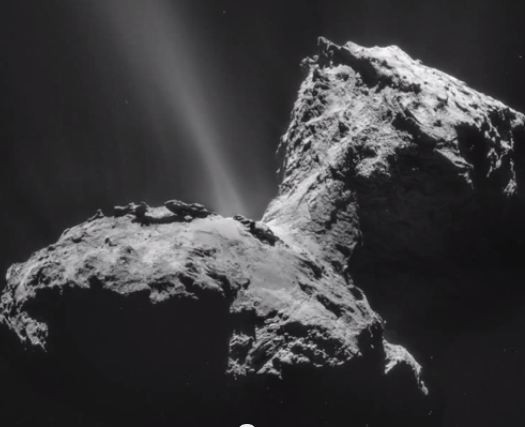The lingering hypothesis magnetism could have had as strong an influence on planetary formation as does gravity might have finally been dispelled by new data from the Rosetta probe orbiting Comet 67P/Churyumov-Gerasimenko.
Scientists from the European Space Agency (ESA) revealed their analysis of the most recent data from Rosetta shows the comet's core isn't magnetized.
This data doesn't support the theory magnetism might have been responsible for aligning and then binding together rocks into larger boulders. It did, however, suggest magnetism might have played a role at earlier stages of planet formation.
The results suggest other forces were responsible although the most prominent force in planetary formation remains gravity.
The conclusions were drawn in a paper published online by the journal Science and written by a team led by Hans-Ulrich Auster at the Technical University of Braunschweig, Germany.
"If the surface was magnetized, we would have expected to see a clear increase in the magnetic field readings as we got closer and closer to the surface," said Auster.
"If comet 67P/Churyumov-Gerasimenko is representative of all cometary nuclei, then we suggest that magnetic forces are unlikely to have played a role in the accumulation of planetary building blocks greater than one meter (3 feet) in size."
Researchers said this finding isn't entirely unexpected but it does help rule out magnetism having a strong influence in planetary formation.
Auster said only a small number of researchers thought they might find a magnetic field on Comet 67P. He said the data doesn't rule out the possibility that magnetism may help pull together small particles in the earliest growth phase of comets or planets.
"But they make it implausible that magnetism furthers the growth of bodies once they have reached a certain size", said Auster.
The findings add to scientists' understanding of how planets and comets formed in the early solar system.
In December 2014, a scientific paper proposed magnetic fields played an important role in the formation of young stars and planets.
Arizona State University astrophysics professor Steve Desch said chondrule magnetism and the overall magnetism present in the developing solar system could offer an explanation for rapid planet formation.
Desch and his colleagues argued that one of the leading hypotheses is that planet formation was accomplished by a strong magnetic field that existed during the first few million years of solar system formation.
"Our results indicate that, in fact, a strong magnetic field did exist in the early solar system and, by implication, possibly in many planet-forming regions throughout the universe," said MIT planetary sciences professor Benjamin Weiss who worked with Desch.
According to the nebular model, a process called accretion formed the planets, moons, comets and asteroids in our solar system. Gravity was the main force driving accretion.



























